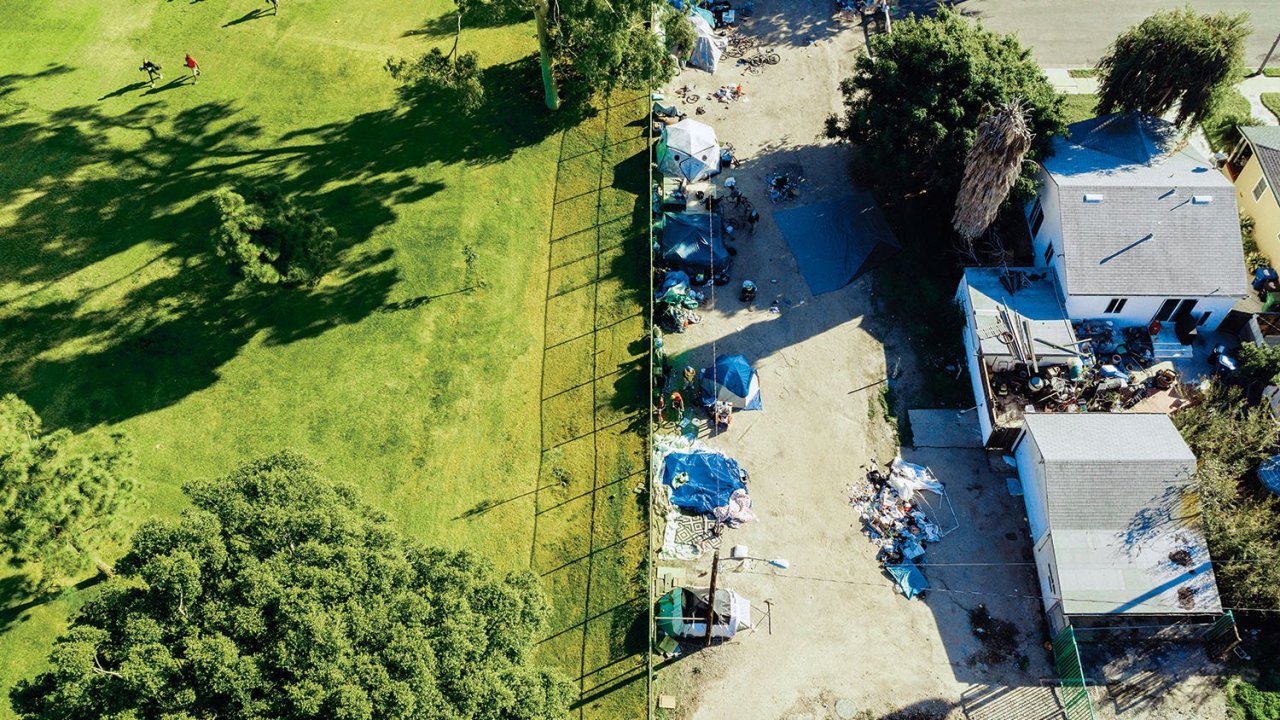The Venice Beach area is known as much for its erstwhile flower-child vibe as it is for its’ stunning natural scenery, but in recent years, this progressive facade has been put to the test as a swelling homeless population has lead to heated clashes with tech-employed locals and bureaucratic officials. With sprawling transient camps directly parallel to seven-figure homes, the beachside has emerged as case zero in regards to the inequality affecting Los Angeles – and a litmus test for the purportedly liberal belief system of residents and the county government alike.
As it stands, the median price of a home near Venice Beach is a staggering $1.9 million. And yet, even more so than in the rest of LA, as real estate prices climb, so too does the area’s homeless population. Venice is, at moment, home to the most dense concentration of homeless residents anywhere on the Westside, with almost 1,000 people living on its streets and beaches. According to recent figures, the past two years have marked a pronounced uptick in this regard, with tents being erected across the shoreline, many of them quipped with cupboards, TVs, space heaters, and mini-fridges, all vying for space amongst residential foot-traffic.
With numerous residents echoing claims of supposed increase in petty crime and drug paraphernalia littering the beaches, this controversy simmered to a boil at a four hour town-hall meeting last October, in which District 11 councilman Mike Bonin and mayor Eric Garcetti were assailed over the city’s plan to open a transitional housing center in a former bus station at the intersection of Sunset and Pacific. One local resident slammed the concept as “pie in the sky… an idea that (doesn’t) make economic sense. If you’re talking about providing shelter for tens of thousands of homeless people but your solutions are costing $475,000 per unit, you’re not going to shelter a lot of people.”
The skepticism expressed by such residents likely stems from past experiences with the city offering promises that start off grant and end up empty. For an example, look no further than 2016, where upon a motion granted the LA County Department of Beaches and Harbors to allow for a series of “overnight restroom” stalls near the Rose Avenue parking lot to accommodate the influx of homeless people in the region. At the time, spokesperson David Graham Caso said: “It’s absolutely intolerable that there was feces and urine on the streets and sidewalks. People living on the street need a place to go.” But now, three years later, the overcrowding and inhumane conditions continue unabated, with few signs of improvement on the horizon. Even the seemingly simple bathroom project remains largely hamstrung pending approvals from various agencies.
According to a Reddit AMA with former LACDBH director Gary Jones, the department’s budget as of 2013 was a towering $59 million annually.This begs the obvious question: with no dearth of finances available to “maintain conditions along the county’s… mainland coast,” why are the area’s homeless still bearing the brunt of this struggle without officially mandated outlets or assistance? Much to the contrary, some of the transient individuals in the area have reported pernicious run-ins, such as a publicized incident which saw a LACDBH vehicle inadvertently running over a 53-year-old homeless sunbather in Venice, resulting in serious injuries.
As with so many of LA’s stymied efforts to aid the homeless community, the Venice initiative, as overseen by the LACDBH unfortunately seems like another failed experiment. Officials have largely given in to the outrage of an increasingly wealthy community and the difficulties of breaching city-code red tape, even in the face of a grave, ongoing crisis. Per Pete White of the Los Angeles Community Access Network: “If we can’t get something as simple as mobile restrooms up and running, that doesn’t give me a lot of faith the city can produce the leadership needed to produce housing units.”
Written by: Dash Finley

